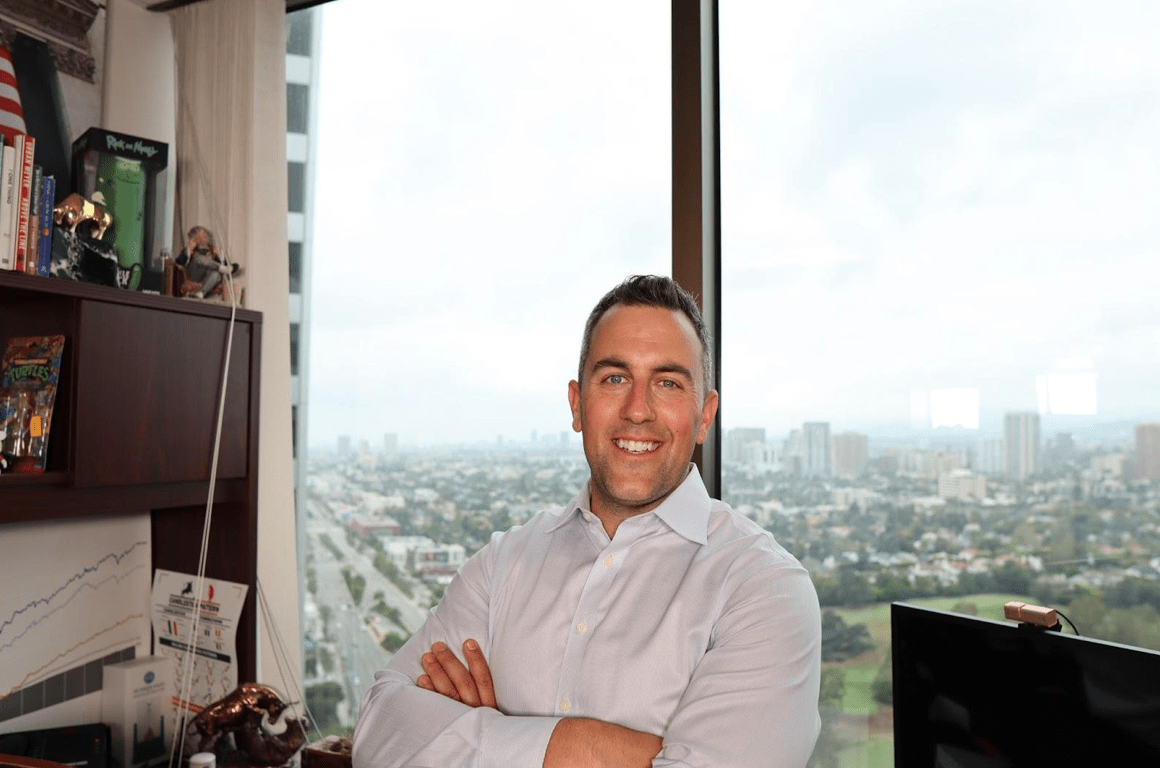Business
The Death the Mutual Fund: Matthew Murawski Explains Why ETFs May Be a Fit as Part of Your Investment Strategy

Since the Great Depression, mutual funds have presented a great opportunity for everyday people to invest in the stock market. Rather than risking their fortune on individual winners and losers, investors selected groups of stocks, making them not only a more diversified investment but also more attainable to people who could not afford the high commission fees, in Murawski’s opinion.
And for decades, mutual fund investing has been touted as a smart, principled financial planning strategy. However, those days may soon be coming to an end. As Goodstein Wealth Management financial planner Matthew Murawski explains, a new generation of investors may usher in a new investment strategy.
“We have a big shift in demographics,” Murawski says. “The Baby Boomer advisor has almost all classic mutual funds. But now, an exchange-traded fund does the same basic principle, but they are typically a lot less expensive and are more transparent and tax efficient.”
One of the most important distinctions between mutual funds and ETFs are the costs associated with each. Although Murawski still uses a few mutual funds, most of his portfolio contains ETFs – for the simple reason that they are generally less expensive and more efficient in his opinion.
“There are zero trading costs for an ETF,” Murawski says. “I can buy the S&P 500 index ETF for about a .03 expense ratio and not pay a commission. I can buy it or sell it whenever I want. But if I buy the same thing in a mutual fund, I’m going to pay a $12, $14, $16 commission every time through our custodian, TD Ameritrade.”
With many Baby Boomer investors and advisors retiring, the guidance is beginning to shift toward a younger generation. And according to Murawski, new advisors and this new investing class are overwhelmingly choosing ETFs.
“I don’t know anybody under 40 buying mutual funds,” Murawski says. “If I said to a client under 40, we’re buying mutual funds in an account, a majority of them will ask, why aren’t we buying ETFs?”
This gradual transition from mutual funds to ETFs is being seen throughout the investment world. ETF.com has projected that in the near future, ETF assets will exceed mutual fund assets. And traditional mutual fund advisors are beginning to take notice. They are trying to adapt to the changes in the market, as well as changes in investment strategy, to maintain relevance with a new generation of investors.
“In my opinion, investors under 30 will never own mutual funds,” Murawski says. “It would be like selling them a Discman. It is almost out of style. So mutual fund companies are being forced to change and come out with ETF versions of the same mutual funds.”
Another way that mutual fund companies are able to adjust is by offering what they call clean shares – dramatically reducing the cost of buying mutual funds. These represent important changes in the way mutual fund companies compete with the emergence of ETFs.
“In my opinion, In the end, those that are not innovating are losing massive amounts of assets,” Murawski says. “The pandemic alone brought millions of new investors into the market. And I do not feel those investors are not going to buy mutual funds.”
In the end, it comes down to cost and performance – and many actively managed mutual funds are not outperforming their benchmarks enough to justify their cost. Instead, investors are choosing ETFs, which can give them nearly the exact same thing at a lower price.
“When you don’t outperform and you charge more, it’s problematic,” Murawski says. “In my opinion, mutual fund companies are either dying or they’re innovating and moving toward a different structure.”
Matthew Murawski is a financial planner with Goodstein Wealth Management. He provides personalized wealth management advice to the firm’s 401(k) clients as well as his own individual clients. Murawski educates investors to help them work towards being positioned for long-term financial growth.
To learn more about Murawski and Goodstein Wealth Management, visit www.goodsteinwm.com or connect on Facebook, Instagram, and Twitter.
Business
High Volume, High Value: The Business Logic Behind Black Banx’s Growth

In fintech, success no longer hinges on legacy prestige or brick-and-mortar branches—it’s about speed, scale, and precision. Black Banx, under the leadership of founder and CEO Michael Gastauer, has exemplified this model, turning its high-volume approach into high-value results.
The company’s Q1 2025 performance tells the story: $1.6 billion in pre-tax profit, $4.3 billion in revenue, and 9 million new customers added, bringing its total customer base to 78 million across 180+ countries.
But behind the numbers lies a carefully calibrated business model built for exponential growth. Here’s how Black Banx’s strategy of scale is redefining what profitable banking looks like in the digital age.
Scaling at Speed: Why Volume Matters
Unlike traditional banks, which often focus on deepening relationships with a limited set of customers, Black Banx thrives on breadth and transactional frequency. Its digital infrastructure supports onboarding millions of users instantly, with zero physical presence required. Customers can open accounts within minutes and transact across 28 fiat currencies and 2 cryptocurrencies (Bitcoin and Ethereum) from anywhere in the world.
Each customer interaction—whether it’s a cross-border transfer, crypto exchange, or FX transaction—feeds directly into Black Banx’s revenue engine. At scale, these micro-interactions yield macro results.
Real-Time, Global Payments at the Core
One of Black Banx’s most powerful value propositions is real-time cross-border payments. By enabling instant fund transfers across currencies and countries, the platform removes the frictions associated with SWIFT-based systems and legacy banking networks.
This service, used by individuals and businesses alike, generates:
- Volume-based revenue from transaction fees
- Exchange spreads on currency conversion
- Premium service income from business clients managing international payroll or vendor payments
With operations in underserved regions like Africa, South Asia, and Latin America, Black Banx is not only increasing volume—it’s tapping into fast-growing financial ecosystems overlooked by legacy banks.
The Flywheel Effect of Crypto Integration
Crypto capabilities have added another dimension to the company’s high-volume model. As of Q1 2025, 20% of all Black Banx transactions involved cryptocurrency, including:
- Crypto-to-fiat and fiat-to-crypto exchanges
- Crypto deposits and withdrawals
- Payments using Bitcoin or Ethereum
The crypto integration attracts both retail users and blockchain-native businesses, enabling them to:
- Access traditional banking rails
- Convert assets seamlessly
- Operate with lower transaction fees than those found in standard financial systems
By being one of the few regulated platforms offering full banking and crypto support, Black Banx is monetizing the convergence of two financial worlds.
Optimized for Operational Efficiency
High volume is only profitable when costs are contained—and Black Banx has engineered its operations to be lean from day one. With a cost-to-income ratio of just 63% in Q1 2025, it operates significantly more efficiently than most global banks.
Key enablers of this cost efficiency include:
- AI-driven compliance and customer support
- Cloud-native architecture
- Automated onboarding and KYC processes
- Digital-only servicing without expensive physical infrastructure
The outcome is a platform that not only scales, but does so without sacrificing margin—each new customer contributes to profit rather than diluting it.
Business Clients: The Value Multiplier
While Black Banx’s massive customer base is largely consumer-driven, its business clients are high-value accelerators. From SMEs and startups to crypto firms and global freelancers, businesses use Black Banx for:
- International transactions
- Multi-currency payroll
- Crypto-fiat settlements
- Supplier payments and invoicing
These clients tend to:
- Transact more frequently
- Use a broader range of services
- Generate significantly higher revenue per user
Moreover, Black Banx’s API integrations and tailored enterprise solutions lock in these clients for the long term, reinforcing predictable and scalable growth.
Monetizing the Ecosystem, Not Just the Account
The genius of Black Banx’s model is that it monetizes not just accounts, but entire customer journeys. A user might:
- Onboard in minutes
- Deposit funds from a crypto wallet
- Exchange currencies
- Pay an overseas vendor
- Withdraw to a local bank account
Each of these actions touches a different monetization lever—FX spread, transaction fee, crypto conversion, or premium service charge. With 78 million customers doing variations of this at global scale, the cumulative financial impact becomes immense.
Strategic Expansion, Not Blind Growth
Unlike many fintechs that chase customer acquisition without a clear monetization path, Black Banx aligns its growth with strategic market opportunities. Its expansion into underbanked and high-demand markets ensures that:
- Customer acquisition costs stay low
- Services meet genuine needs (e.g., cross-border income, crypto access)
- Revenue per user grows over time
It’s not just about acquiring more customers—it’s about acquiring the right customers, in the right markets, with the right needs.
The Future Belongs to Scalable Banking
Black Banx’s ability to transform high-volume engagement into high-value profitability is more than just a fintech success—it’s a signal of what the future of banking looks like. In a world where agility, efficiency, and inclusion define competitive advantage, Black Banx has created a blueprint for digital banking dominance.
With $1.6 billion in quarterly profit, nearly 80 million users, and services that span the globe and the blockchain, the company is no longer just scaling—it’s compounding. Each new user, each transaction, and each feature builds upon the last.
This is not the story of a bank growing.
This is the story of a bank accelerating.
-

 Tech4 years ago
Tech4 years agoEffuel Reviews (2021) – Effuel ECO OBD2 Saves Fuel, and Reduce Gas Cost? Effuel Customer Reviews
-

 Tech6 years ago
Tech6 years agoBosch Power Tools India Launches ‘Cordless Matlab Bosch’ Campaign to Demonstrate the Power of Cordless
-

 Lifestyle6 years ago
Lifestyle6 years agoCatholic Cases App brings Church’s Moral Teachings to Androids and iPhones
-

 Lifestyle4 years ago
Lifestyle4 years agoEast Side Hype x Billionaire Boys Club. Hottest New Streetwear Releases in Utah.
-

 Tech7 years ago
Tech7 years agoCloud Buyers & Investors to Profit in the Future
-

 Lifestyle5 years ago
Lifestyle5 years agoThe Midas of Cosmetic Dermatology: Dr. Simon Ourian
-

 Health6 years ago
Health6 years agoCBDistillery Review: Is it a scam?
-

 Entertainment6 years ago
Entertainment6 years agoAvengers Endgame now Available on 123Movies for Download & Streaming for Free
